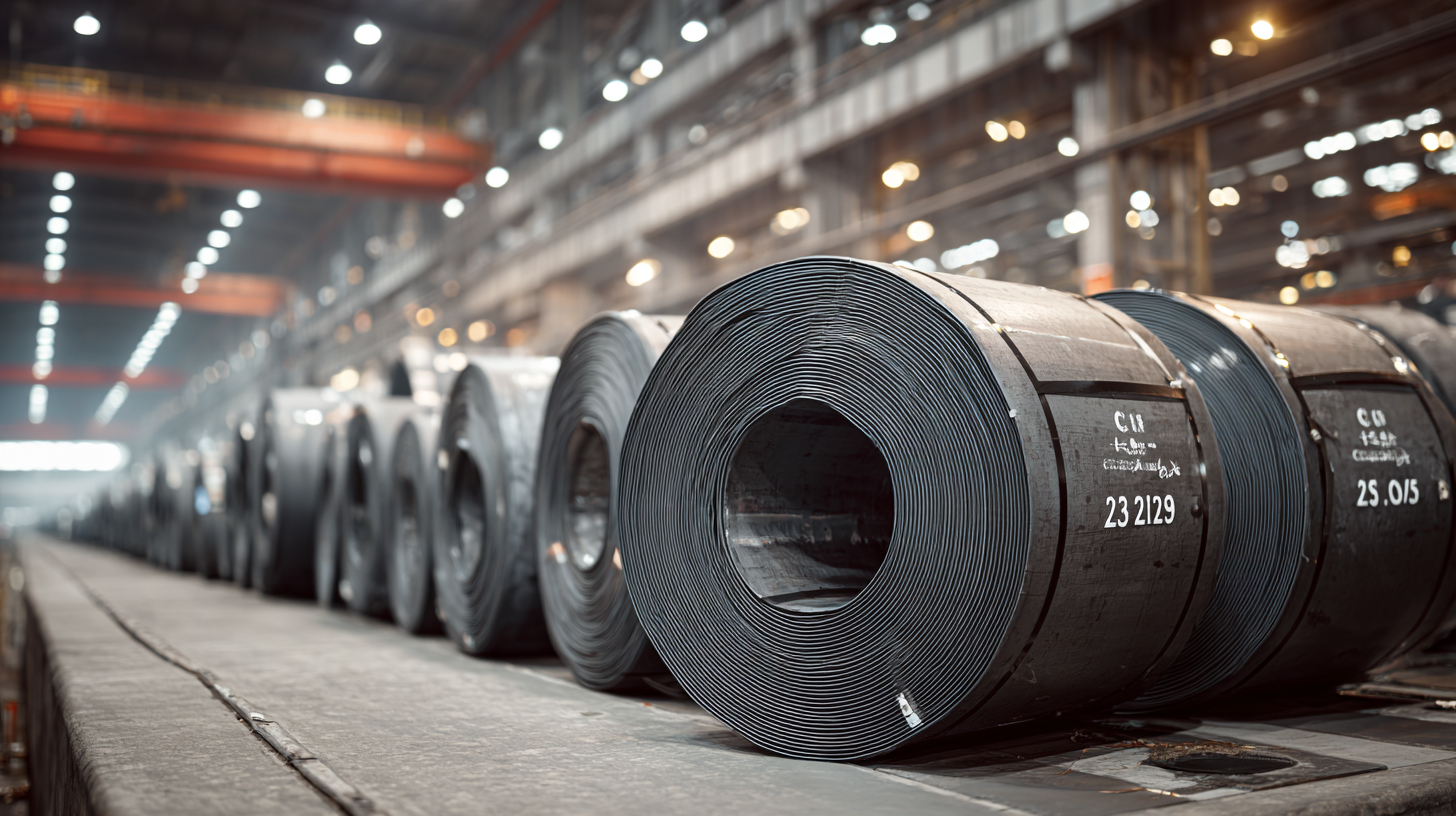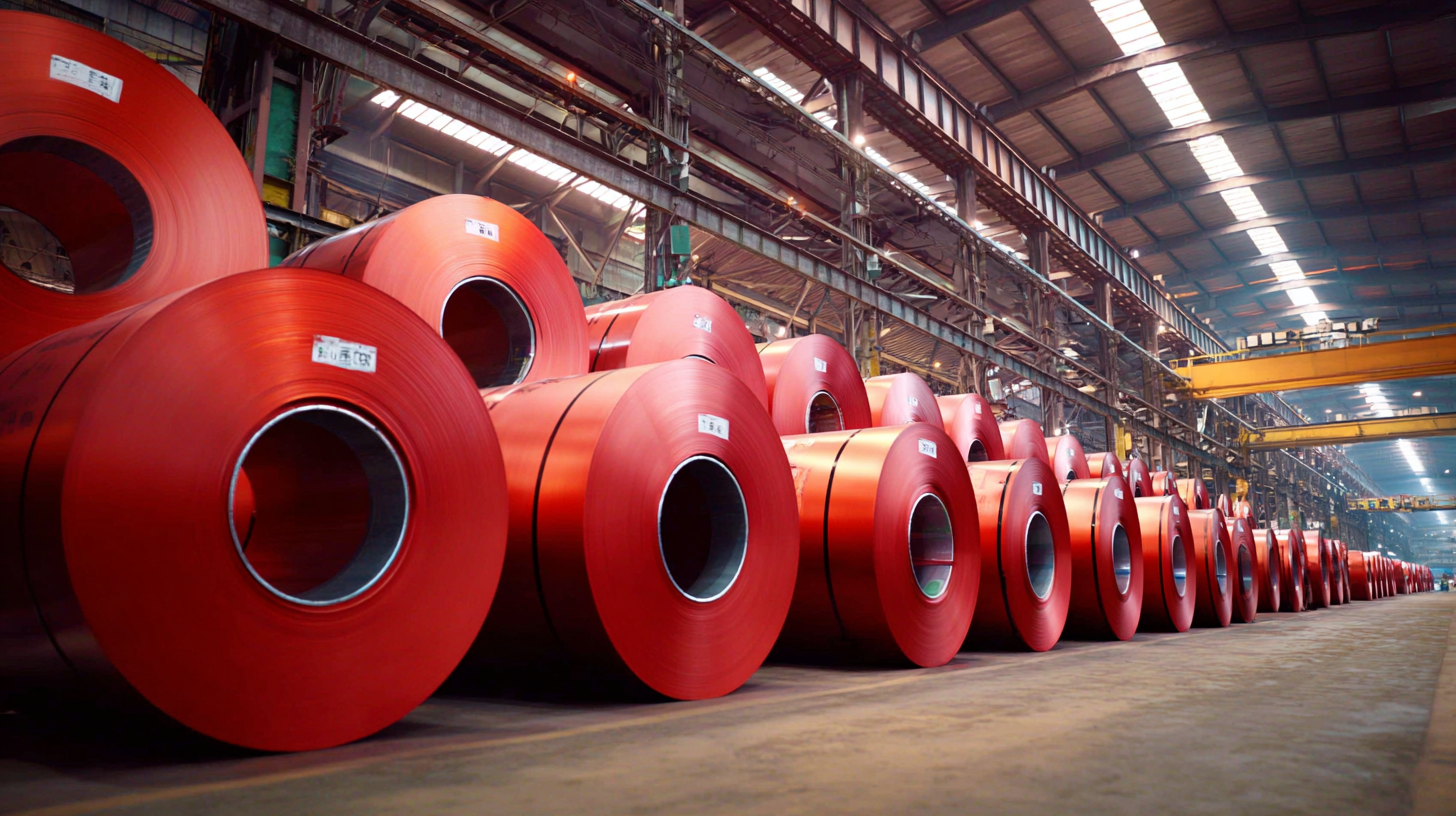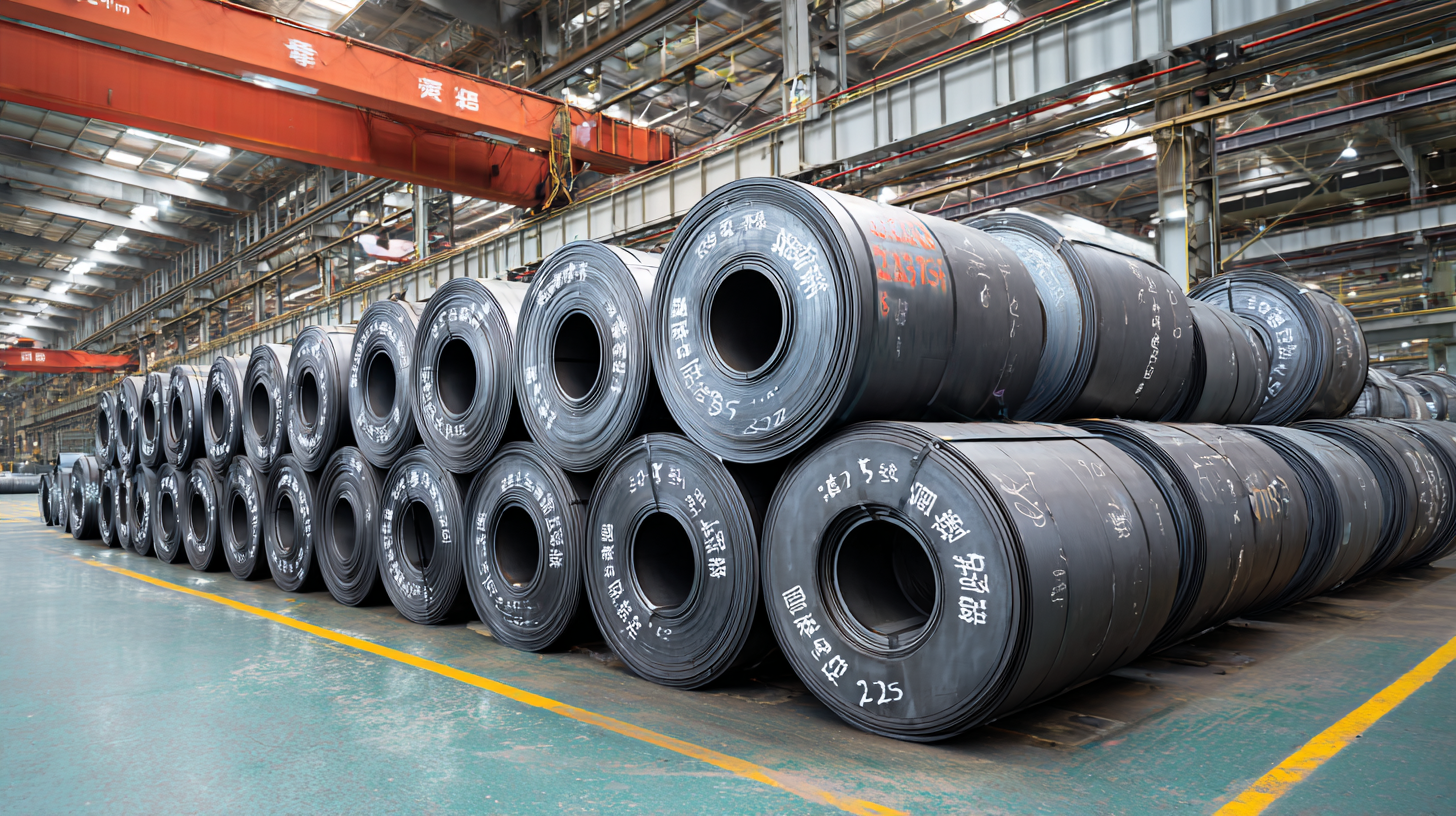In the ever-evolving landscape of industrial manufacturing, the demand for high-quality materials is paramount. Among these, Carbon Steel Coil Hot Rolled has garnered significant attention for its versatility and superior performance across various applications. This blog delves into the unmatched quality offered by China’s premier factories, showcasing their commitment to excellence and innovation in producing the best Carbon Steel Coil Hot Rolled available in the global market.

We will explore essential tips for selecting the right supplier, the advantages of investing in top-tier materials, and the latest trends impacting the carbon steel industry. Join us as we uncover the key factors that set these manufacturers apart and why they are leading the charge in delivering outstanding products to customers worldwide.
 China has emerged as a powerhouse in the carbon steel coil market, boasting several key manufacturers that set the standard for quality and innovation. Among these leading players, companies like Baosteel and Ansteel stand out for their advanced production techniques and commitment to sustainability. These manufacturers leverage state-of-the-art technology to ensure that their hot-rolled carbon steel coils meet both domestic and international quality standards, making them the preferred choice for industries around the globe.
China has emerged as a powerhouse in the carbon steel coil market, boasting several key manufacturers that set the standard for quality and innovation. Among these leading players, companies like Baosteel and Ansteel stand out for their advanced production techniques and commitment to sustainability. These manufacturers leverage state-of-the-art technology to ensure that their hot-rolled carbon steel coils meet both domestic and international quality standards, making them the preferred choice for industries around the globe.
In addition to their commitment to excellence, these Chinese manufacturers are known for their ability to adapt to market demands. By investing in research and development, they continuously improve their products to cater to various applications, from automotive to construction. Furthermore, the robust infrastructure and supply chain in China enable these companies to deliver products efficiently and at competitive prices. This strategic positioning not only solidifies their dominance in the market but also opens doors for international partnerships, furthering their reach and influence in the global steel industry.
When it comes to steel production, understanding the differences between hot rolled and cold rolled steel is crucial for making informed decisions based on specific application needs.
 Hot rolled steel is produced by rolling the steel at high temperatures, which allows it to be easily shaped and formed. This method often results in a rougher surface finish, but it provides excellent structural integrity, making hot rolled steel a preferred choice for applications requiring strength, such as construction and heavy-duty machinery.
Hot rolled steel is produced by rolling the steel at high temperatures, which allows it to be easily shaped and formed. This method often results in a rougher surface finish, but it provides excellent structural integrity, making hot rolled steel a preferred choice for applications requiring strength, such as construction and heavy-duty machinery.
In contrast, cold rolled steel undergoes further processing at room temperature, which enhances its surface finish and dimensional accuracy. This makes cold rolled steel a better option for applications where aesthetics and precision are paramount, like in automotive components and consumer products. Additionally, the cold rolling process increases the overall strength of the material, allowing for thinner sheets with enhanced performance characteristics. Understanding these differences enables manufacturers and engineers to select the right type of steel for their specific applications, ultimately improving efficiency and product quality.
The global market for carbon steel coils is experiencing significant transformation driven by rising demand across various industrial applications. As industries such as metallurgy, casting, and metal forming continue to expand, the need for high-quality hot-rolled carbon steel coils is at an all-time high. This demand is particularly influential in regions witnessing rapid urbanization and infrastructure development, emphasizing the essential role that carbon steel plays in manufacturing and construction.
China's premier factories have positioned themselves as critical players in this competitive landscape. Their focus on unmatched quality and advanced production techniques enables them to meet rigorous international standards, thus catering to an ever-growing global market. Projections indicate a robust growth trajectory for carbon steel coils, with many analysts forecasting increased investment in production capacity and technology upgrades to keep pace with market needs. These developments are expected to drive innovation and efficiency, reinforcing China’s foothold as a leader in the global carbon steel sector.
In the competitive landscape of carbon steel production, factories are increasingly implementing rigorous quality assurance processes to guarantee the durability and consistency of their products. Ensuring that each batch of hot-rolled carbon steel coils meets industry standards is crucial, not only for customer satisfaction but also for the prevention of material rejection. According to recent industry reports, approximately 15-20% of steel products face rejection due to quality discrepancies, highlighting the need for manufacturers to adopt standardized practices.
To address these challenges, leading steel manufacturers are employing advanced techniques, including real-time monitoring and statistical process control. Such methods enable them to immediately detect deviations from specified quality parameters. Furthermore, recent studies indicate that implementing these quality assurance practices can reduce production defects by up to 30%, significantly enhancing operational efficiency. By committing to a culture of quality and continuous improvement, premier factories are setting new benchmarks in the carbon steel industry, ensuring that customers worldwide receive products that not only meet but exceed expectations.
China's carbon steel exports have a significant global impact, particularly amidst the backdrop of ongoing trade tensions and tariff implementations. The U.S.-China trade war has reshaped the landscape of international trade, with tariffs on Chinese goods creating challenges for exporters. Despite these hurdles, China's commitment to delivering high-quality carbon steel coils remains unwavering, and its role as a leading supplier in the global market is crucial. According to the latest OECD Steel Outlook, the demand for steel is projected to grow steadily, reflecting the continuing need for robust infrastructure development worldwide.
Tips for manufacturers looking to navigate this landscape include fostering direct relationships with international clients to better understand their needs and respond promptly to changes in trade policies. Additionally, investing in sustainable production methods, such as those aligned with the EU's carbon border adjustment mechanism, can not only mitigate potential regulatory impacts but also enhance brand reputation in a progressively eco-conscious market.
As global markets adjust to new trade realities, staying informed about the fluctuations in tariffs and trade agreements will be essential for any business involved in steel production or distribution. By keeping an eye on economic reports and trade statistics, companies can strategize effectively and capitalize on emerging opportunities amidst the challenges posed by the current global trade environment.
This bar chart illustrates the global exports of carbon steel coil hot rolled from China over the years 2021 to 2023. The data indicates a steady increase in exports, showcasing China's significant role in the global steel market.





